Breathtaking pixel art video shows 100 years of Japanese work culture changes【Video】
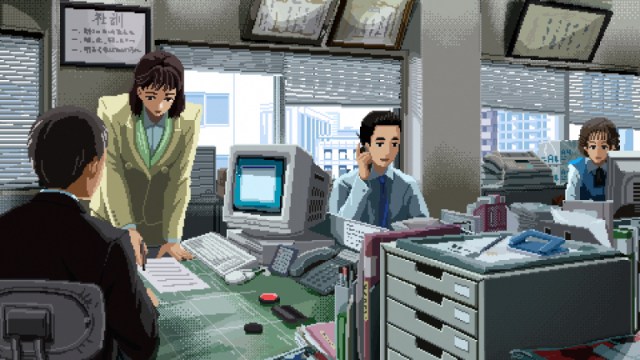
From the birth of salarymen to the rise of the company warrior and the new normal.
A retro medium feels like an appropriate choice for a look back at the last 100 years. So when Japanese human resources firm SmartHR wanted to put together a visual retrospective on the changes to Japanese work culture over the past century, they reached out to pixel artist Motocross Saito, and the result is the beautiful video Hataraku no Hyaunenshi, or 100 Years of Work in Japan.
100 years isn’t just a nice round number. It also lets the video open in the 1920s, when the word “salaryman” started coming into widespread use in Japan.
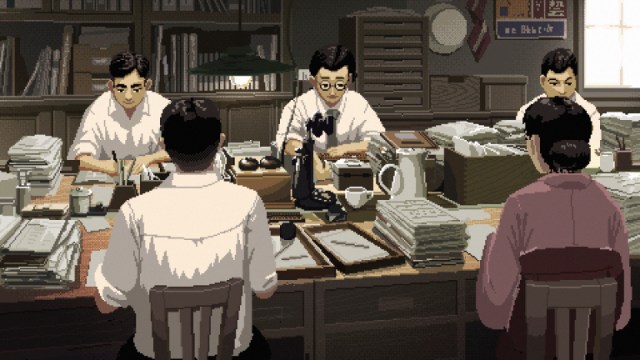
In this era, it was still relatively unusual for women, married or single, to work outside the home. Those that did, in this era, were referred to as shokugyo fujin, or lady professionals, a term that’s since faded away as women with employment are no longer a rarity.
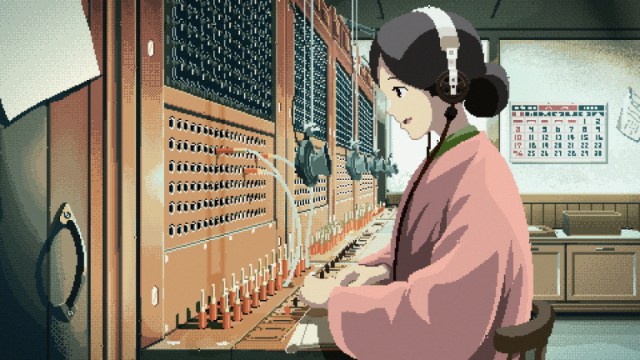
Moving on to the 1940s, we see Imperial army uniforms transition to business suits, as Japan’s military is dismantled following its defeat in World War II and the difficult process of reconstruction begins.
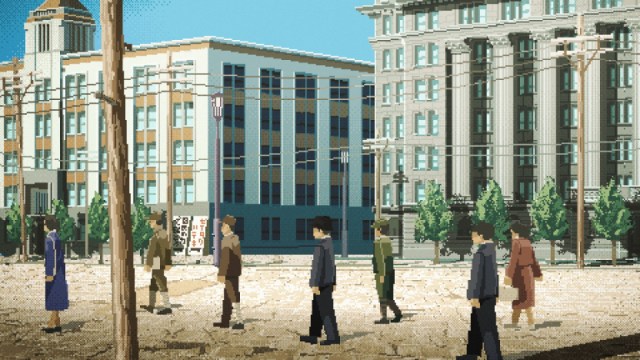
That drive to claw back to an economically stable society shows up in the 1950s, when we see a pair of salarymen grinding away in their office, sweating as their single electric fan fails to cool the room and one of them, after crunching some numbers on an abacus, speaks into the receiver of a rotary-dial telephone.
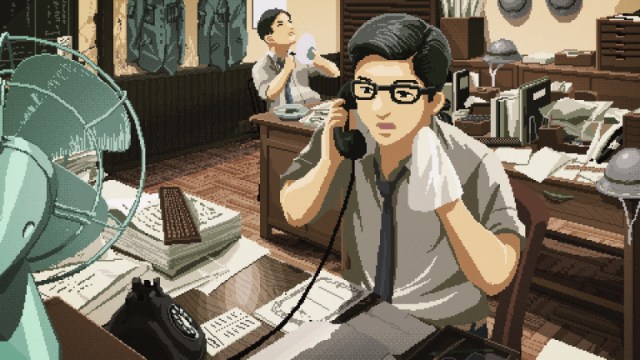
Signs of prosperity begin to show up in the 1960s, with an auspicious-looking view of Mt. Fuji out the window of the then-new Shinkansen bullet train.

But the subsequent boom times have their own drawbacks, like a severaly overcrowded commuter train in the 1970s, or a kigyo senshi (“company warrior”) putting in overtime long after the sun has gone down.
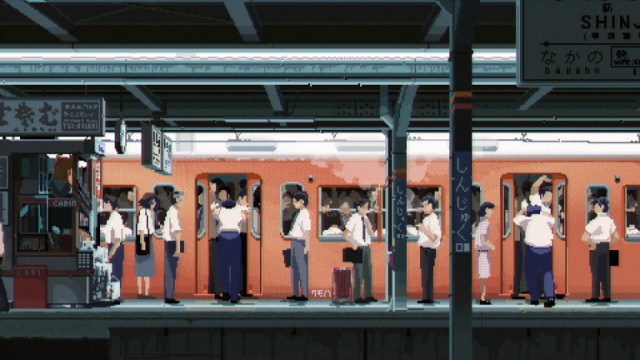
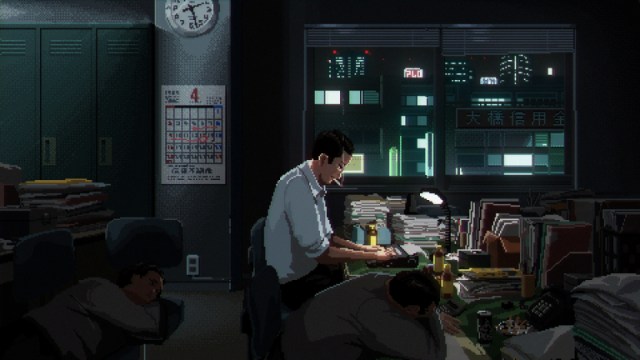
Work won’t necessarily end when he leaves the office, either. With the bubble economy of the ‘80s in full swing, nominication (“drinking communication”), solidarity-building and networking through frequent drinking parties, grow increasingly prevalent, even as people start to realize the joys of hanakin (“flowering Friday”), living it up after clocking out at the end of the work week.
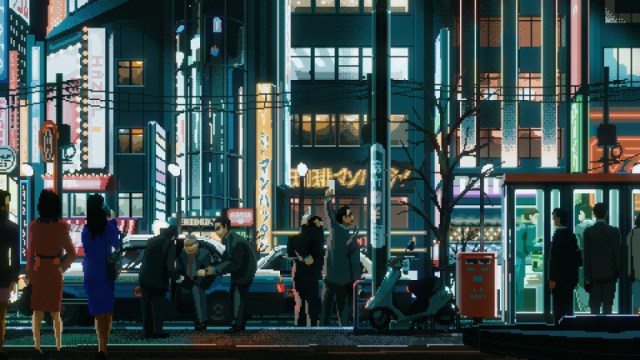
The ’90s bring two changes, as mobile communication devices and women in the workplace become permanent part of professional life in Japan.

The flexibility provided by technology brings about a new work style in the 2010s, that of the laptop-equipped“nomad worker” who’s as likely to spend a productive shift in a coffee shop as an office building. There’s also a subtle sign of changing health attitudes, as after seeing scenes of people smoking at their work desks, while riding trains, and even on station platforms now we’ve got a prominent “no smoking” sign for an outdoor space.
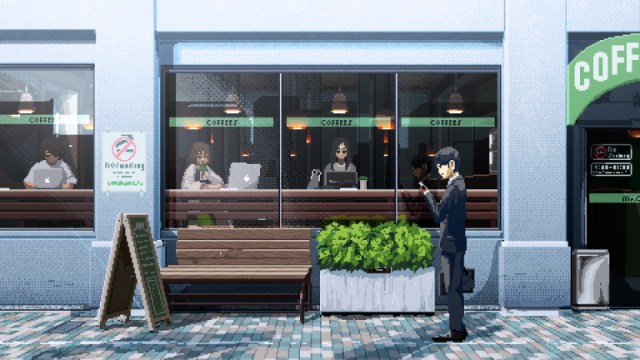
Speaking of health issues, it’s no surprise that once the video gets to the 2020s, we see society adapting to the coronavirus pandemic, with masks, staggered seating, and a plastic partition put up in what was previously an archetypal Japanese open office-style layout.
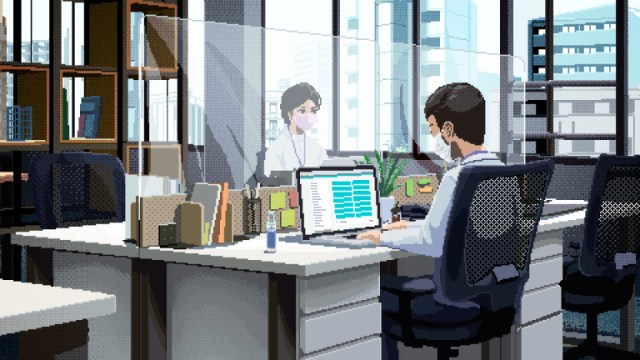
And finally, representing the “new normal,” we come to a work-from-home scene, with a woman having a video conference from her kitchen table while her husband or boyfriend attends to their child.
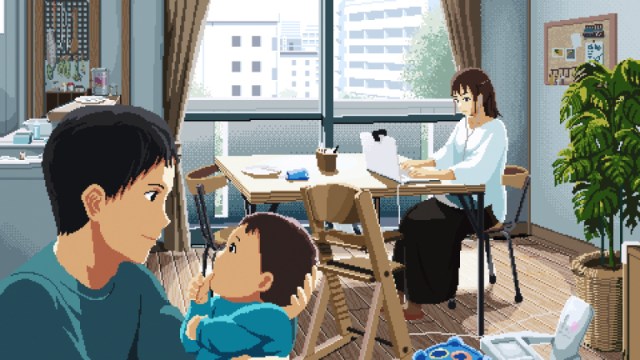
It’s a lot of history to cover in under two minutes, but 100 Years of Work in Japan does it beautifully, wrapping up with the question “So, what’s coming next?”, reminding us that even now the changes that will shape the next 100 years are already starting.
Source: Press release
Featured image: YouTube/SmartHR
Top, insert images: Press release
● Want to hear about SoraNews24’s latest articles as soon as they’re published? Follow us on Facebook and Twitter!
Credit:

0 comments:
Post a Comment